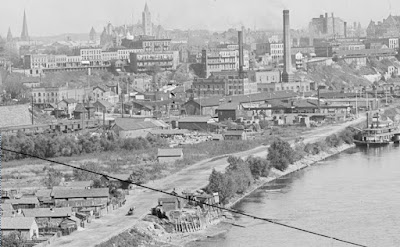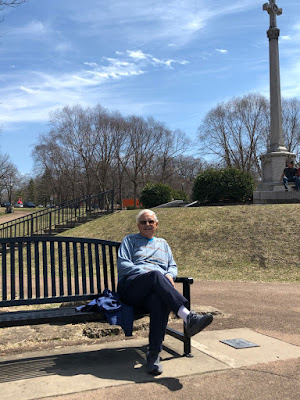I’m
going back to Big Sur for the first time.
The
reality of covid-19 hit me upon my return to Minnesota. Between the pandemic
and its social distancing guidelines, I suddenly find myself unable to workshop
any of the three plays I’d just completed back in Palm Springs. Furthermore, I
wouldn’t be able to work closely with musicians to create the music for those
plays. At least for the foreseeable future, the plays were on hold and stuck in
their first draft. I really needed feedback to proceed further with their
development.
Added
to that disappointment, my gym was closed as were the coffee shops where I love
to hold my cerebral salons. The libraries and bookstores were closed so I had
to get my books online or at Half-Price Books. Then some of my friends were
reticent to visit on my patio even though I could guarantee them a good ten
feet distance between us. I was stuck in a kind of limbo without any of my
regular routines to follow.
So
what is a hyperactive, overly scheduled adult supposed to do in such a
situation? I could quarantine myself and wait for the virus to leave. I could
putter around the lawn all day. Knowing me fairly well, I knew I had to do
something more productive. Productive in my world translated into more writing
and editing. Therefore, I could edit what I’d already written, select more
subject matter for future blogs, or write something entirely new.
I
opted for the latter and decided to write another novel. But it would not be
just any new novel (which would be my eleventh thus far). This new novel would
be an entirely new genre for me - a murder mystery / thriller entitled ‘The Trades.’
The
novel would be set in the fast-paced world of publishing in San Francisco and
the dark, mysterious backwoods of Big Sur. It would host a cast of characters
that are still vapid ghosts in my imagination but are slowly taking shape. I
see them as each being corroded with human foibles and yet hope (among a few of
them) for the future. It would have good guys, bad guys, and many more that
float between good intentions and not so good. Many of them can’t be
categorized so easily. It would naturally include a love story but one where
none should have surfaced in the first place.
I
already have an eighteen-page treatment that over several years, I’ve sliced,
diced, and mixed up quite a bit. Now I just had to put finger to keyboard and
make these characters come to life. Research of the ‘trades’ and the Big Sur
area would be critical since I had only been there once earlier this year but
that was just passing through at sixty miles per hour. See my past blog: Solvang for more details.
As
a young man in another life, I had been close to the Big Sur wilderness area
once before. Unbeknownst to me, In 1964 I had just missed meeting a new wave of
strange characters that would soon be wandering Big Sur’s deep impenetrable
forests and jagged coastline. In 1964-65, I was stationed at the Presidio of
San Francisco. I wandered up the northern coast of California but never made it
as far south as Big Sur. Half Moon Bay was a far as I got on my motor scooter.
Historically,
the Big Sur area was derived from that unexplored and un-mapped wilderness area
which lies along the coast south of Monterey. Back in the day, it was simply
called el pais grande del sur, the Big South Country. Today, it refers to a
90-mile stretch of rugged and beautiful coastline between Carmel to the north
and San Simeon (Hearst Castle) to the south.
In
1937, the present highway was completed after eighteen years of construction at
a considerable expense even with the aid of convict labor. Electricity did not
arrive in Big Sur until the early 1950’s, and it still does not extend the
length of the coast or into the more remote mountainous areas. There is no
cellphone service so if your car breaks down, you’re truly SOL (____out of
luck).
In
the 1940s, 50s and 60s, Henry Miller lived in Big Sur on and off for years. Miller
was an American writer known best for breaking with existing literary forms and
developing a new type of autobiographical novel that blended character study,
social criticism, philosophical reflection, stream of consciousness, explicit
language (Tropic of Cancer), sex, surrealist free association and mysticism. He
was also part of an avant-garde art colony centered around his controversial
writings and philosophy of life. I knew Henry would be the perfect kind of idol
for some of my characters in the book.
Jack
Kerouac followed Miller in the 1950s. Then in the ‘60s Allen Ginsburg, along
with Wavy Gravy and the Merry Pranksters, made annual pilgrimages down there to
smoke dope, take LSD and get lost inside their heads. Timothy Leary used the
area as the perfect setting for his pro-motion of LSD as a mind-expanding drug.
He often times hosted events in the forests of Big Sur.
Esalen
became a new age enclave and heralded the advancement of its human potential
movement. It seemed only appropriate
that the wild, weird, and wonderful characters that are a part of the fabric
and tapestry of San Francisco and Big Sur should play a prominent role in this
next novel.
The
main characters, along with an assortment of bit players, masked strangers, and
two-faced villains are all rehearsing in the twenty-five chapters I’ve outlined
thus far. I’m trying to capture some of their dialogue, at least in my head, so
I can begin to pound it out on my pages very soon. I’ve already seen the novel
take a number of surprising twists and turns. Unbeknownst to me, motivation and
greed and evil intents aren’t always as easy to recognize as I first imagined.
I expect the first draft of this endeavor will come relatively easy for me.
It’s going to be the second, third, and perhaps fourth draft that really make
or break the novel.
This
genre is a first for me so it’s going to be a different kind of journey. I’m
comfortable in the saddle. The sixties were a charm. I’ve been to the A Shau
and traveled around the world in the company of an endearing friend. However,
putting on a criminal mind and plotting the demise of others is a whole new
ballgame.
I
think I’ve created an interesting main character (at least in my head) and
(once again) a woman who is beautiful, smart and can kick ass with the best of
them. Of course, it doesn’t help that both are overshadowed by the ghost of
Henry Miller and Lewy Body syndrome. I expect they’re going to take me on one
interesting adventure. I hope others will ultimately want to come along and
share the excitement with me.
TBA



































































